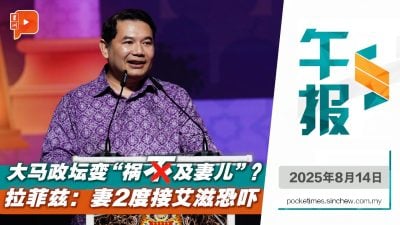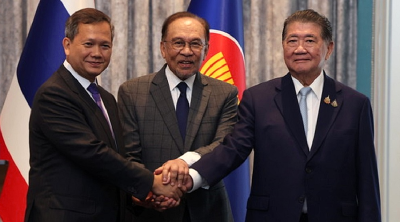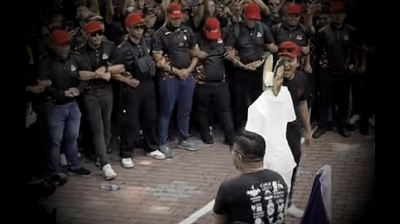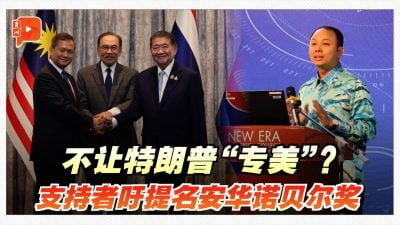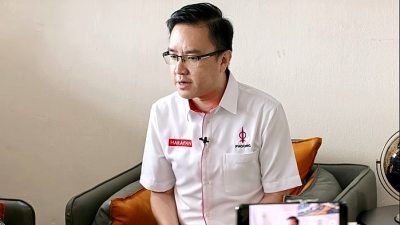
Without too much fanfare, PKR entered its 25th year since its formation in 1999. It is both surprising and unsurprising that it has been this long.
Surprising because for the most part of PKR’s existence it has been mired with street protest, arrests, and its leader, Anwar Ibrahim, in jail. Unsurprising because PKR has been a permanent fixture in elections since 2008 when it had a breakthrough, winning 31 seats, and has since delivered consistently 30+ seats.
At the special convention last Sunday, PKR set out two new frameworks to set forth over the next few years. One is focused on party organisation, called POP25, as it looked to activate its large number of divisions and members to be more engaged. Two is focused on the next general election, called KEMAS16, which is meant to jumpstart its election preparations due in 2-3 years time.
The central aim of these two frameworks is to ensure that PKR continues to govern for a second term and Anwar remains as the country’s prime minister. It puts aside the question of succession, on who will come after Anwar who will reach 80 years old in the next general election.
While this is not addressed by the party, it is important to see a few changes happen in PKR, as the only governing Malay-led multiracial party in Malaysia.
The most important thing that will change for PKR’s next 25 years is the cause it fights for. After the major crisis of sacking, arresting, and jailing Anwar Ibrahim, PKR’s central cause has always been to free Anwar, and subsequently make him prime minister. There were other causes related to this including correcting the institutional flaws of a politicalised judiciary and anti-corruption commission, but they were not the central aim.
Now that PKR is in government for the first time, it could no longer attach its cause to Anwar. This is a fundamental shift that must happen, as PKR evolves from a party championing one man, to a party that champions the common people.
As a party, PKR has reach in the urban and suburban setting, but the members consist mainly of Malaysians at the B40 category. These members have sacrificed years of their lives fighting for Reformasi, and now that PKR is in power, the most obvious expectation is to see the lives of common people improve.
Anwar’s anti-corruption narrative is still emotive and effective in all his speeches, but that will need to expand into benefiting the common people on the ground.
Today, PKR is the second largest party with more than 1.1 million members, second only to UMNO with 3 million members. This is a vast pool of believers who could mobilise the ground, transmit the right message, and run community-level programs.
But the current sentiment is one of fatigue and exhaustion, partly from finally taking a pause after fighting for decades, and partly because a governing party is typically less engaged with its members.
To overcome this, PKR would require both an activation and addition of talent within the party. As a governing party, PKR needs to lead in policy thinking and implementation, and this ought to be driven by younger leaders who represent the future of the party. It goes without saying that most parties’ youth wing had been dedicated to making occasional press statements on sensational issues, but the policy making training internally has to be done more deliberately.
In the golden era of PKR, between 2005-2013, Anwar led the policy discourse in both abolishing the New Economic Policy from race-based to needs-based, and also taking middle ground approaches to other thorny issues. He was always in favour of an ideological synthesis where Malaysia is suited for applying many different schools of thought.
That spirit of discussing policies has to take place in earnest so that PKR is seen as a leader of policy like it was in the past during the opposition’s manifestos. PKR’s introduction of Felo Keadilan is a recruitment effort to draw more youths into the party.
The big challenge that PKR will face is that youths do not join politics as readily as the past because of a general fatigue and how technology has taken up more time in young people’s lives. PKR would have to modernise and professionalise its party to make it a place of discourse with a sense of community for youths to think this is worth their time. It needs to also be a technology-first party so that it fits young people’s style of engagement.
Unlike most analysts, I do not think that the Anwar successor issue is a major one. It is unlikely that Anwar will cling onto the president position for more than two terms from now, and in any case, a successor would have to provide Anwar a role after his retirement. Anwar will likely still be a senior mentor or advisor to the party, as he was the main reason PKR existed and it will be important as a sign of respect.
The main question for PKR is how it transitions from a street protest party that champions Anwar’s freedom and prime ministership, to a modern, multiracial party that leads on policy with its young leaders. This is a tough question for PKR to answer, and it is forgivable that they are taking some time to transition and figure out.
But it will be a question that they will have to answer eventually, whether sooner or later.

(James Chai is a Think Tank Chief Researcher and Legal Advisor)
ADVERTISEMENT
ADVERTISEMENT








